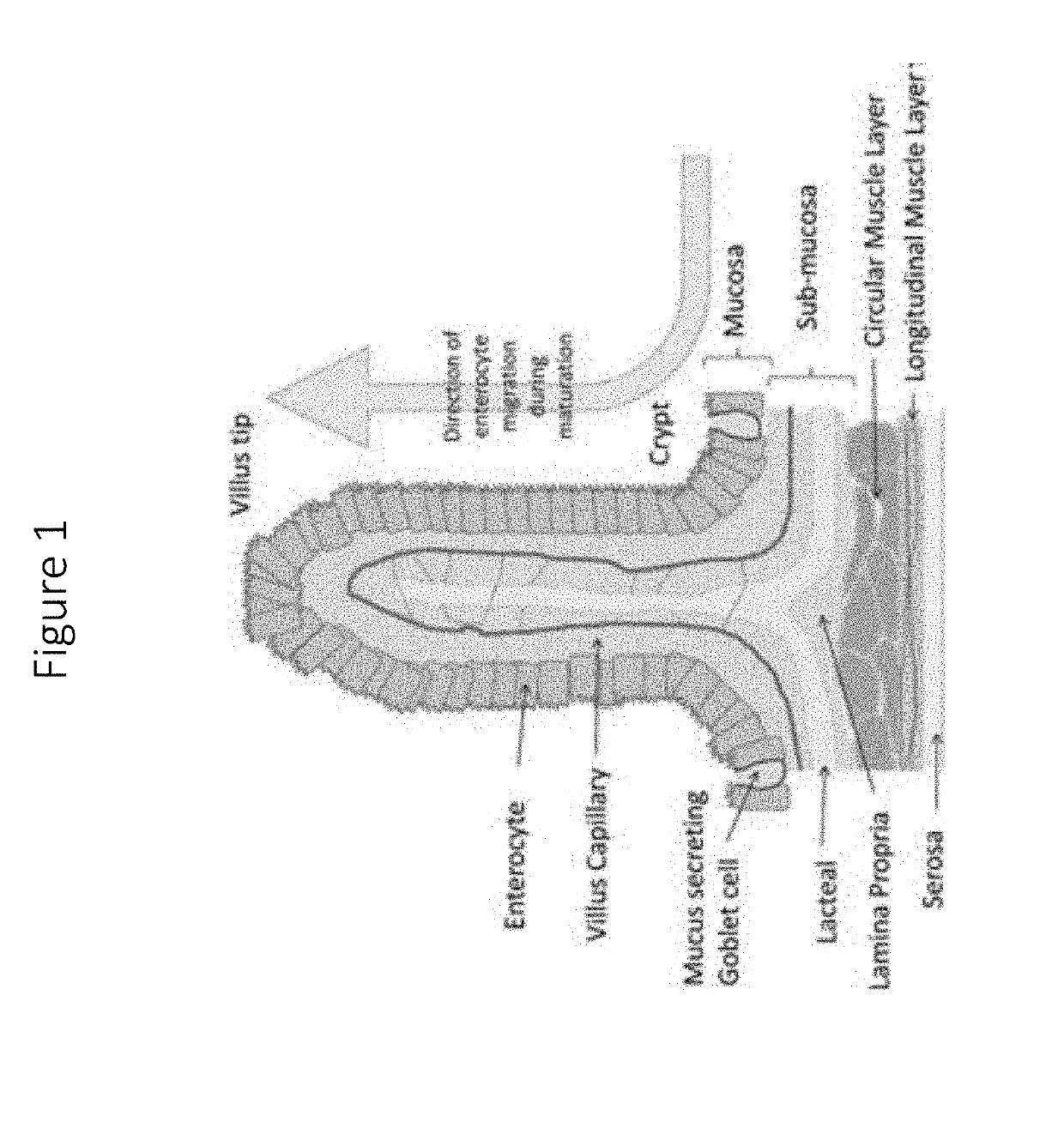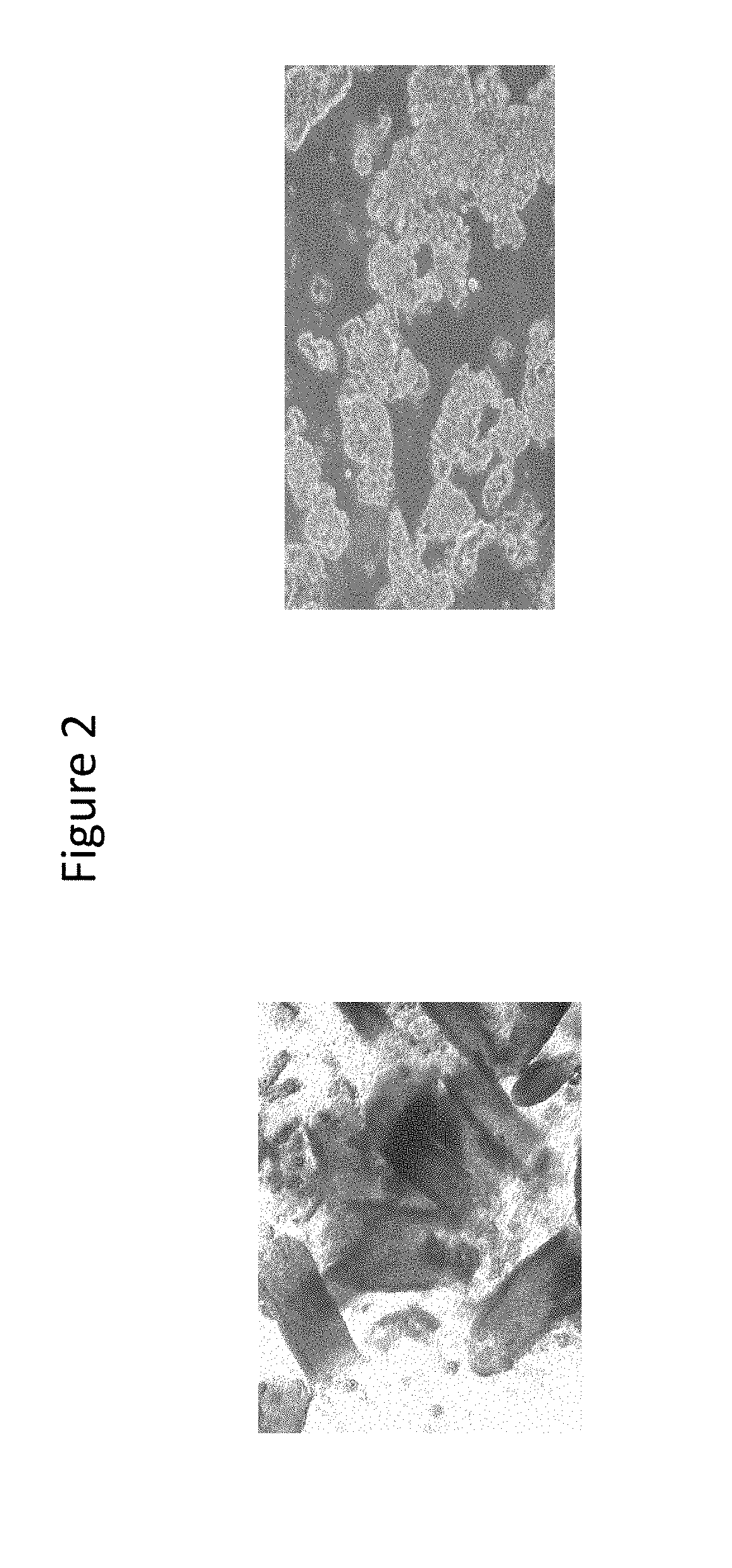Isolated intestinal mucosa and uses thereof
a technology of intestinal mucosa and isolating intestinal mucosa, which is applied in the field of metabolically competent isolating intestinal mucosa, can solve the problems of limited experimental system of the small intestine, inconvenient use of small intestine, and inability to provide information useful for human outcomes assessment, etc., and achieve the effect of determining pharmacological effects
- Summary
- Abstract
- Description
- Claims
- Application Information
AI Technical Summary
Benefits of technology
Problems solved by technology
Method used
Image
Examples
example 1
[0082]Isolation of intestinal mucosal comprising villi are eluted using methods known in the art. Those methods include elution of the intestinal mucosa from the lumen of intestines by: flowing cold vulture medium through or over the lumen; adding an enzyme (e.g. collagenase; protease) to the lumen, followed by incubation at 37° C., wherein the mucosa comprising villi are released with a culture medium wash; or, by adding a chelating agent, such as EDTA, to the lumen wherein the mucosa comprising villi are released following an incubation period at 37° C.
[0083]In embodiments, the human small intestine was dissected, cut longitudinally, and washed briefly with ice-cold Dulbecco's Modified Eagle's Minimal Medium (DMEM). The tissue was further dissected into smaller pieces and incubated in DMEM at 4° C. with gentle shaking to release the intestinal mucosa. The released intestinal mucosa was collected as a pellet by centrifugation at 100×g for 10 minutes. The pellet ...
example 2
rvation of Isolated Intestinal Mucosa; Preparation of an In Vitro Reagent for Evaluating Biological Activity of a Test Substance
[0085]In embodiments, the isolated intestinal mucosa suspension comprising villi was subjected to cryopreservation. The isolated intestinal mucosal comprising villi were prepared according to Example 1. A cryo-preservant, dimethyl sulfoxide (DMSO) was added slowly to the mucosa suspension at 4 deg. C. until the final concentration reaches 10% of the final total volume (addition of 100 mL of DMSO to 900 mL of mucosa suspension). The suspension was dispensed into cryovials (e.g. 1 mL per vial) and cryopreserved in a programmable cryofreezer at a freezing rate of −1 deg. C. per minute until −95 deg. C. The cryovials were stored in liquid nitrogen until use. See FIG. 2.
example 3
rved Isolated Intestinal Mucosa Retain Drug Metabolizing Activity
[0086]In embodiments, isolated intestinal mucosa comprising villi were prepared according to Example 2 and demonstrated to retain their drug metabolizing activity.
[0087]The major drug metabolizing enzyme of the intestinal mucosa is cytochrome P450 isoform 3A4 (CYP3A4). Incubation of cryopreserved human intestinal mucosa with a CYP3A4 substrate, luciferin IPA led to time-dependent increases in metabolite (luciferin) formation quantified by luminescence. The results showed that the cryopreserved human intestinal mucosa was capable of drug metabolism. See FIG. 3.
PUM
| Property | Measurement | Unit |
|---|---|---|
| temperature | aaaaa | aaaaa |
| temperature | aaaaa | aaaaa |
| temperature | aaaaa | aaaaa |
Abstract
Description
Claims
Application Information
 Login to View More
Login to View More - R&D
- Intellectual Property
- Life Sciences
- Materials
- Tech Scout
- Unparalleled Data Quality
- Higher Quality Content
- 60% Fewer Hallucinations
Browse by: Latest US Patents, China's latest patents, Technical Efficacy Thesaurus, Application Domain, Technology Topic, Popular Technical Reports.
© 2025 PatSnap. All rights reserved.Legal|Privacy policy|Modern Slavery Act Transparency Statement|Sitemap|About US| Contact US: help@patsnap.com



